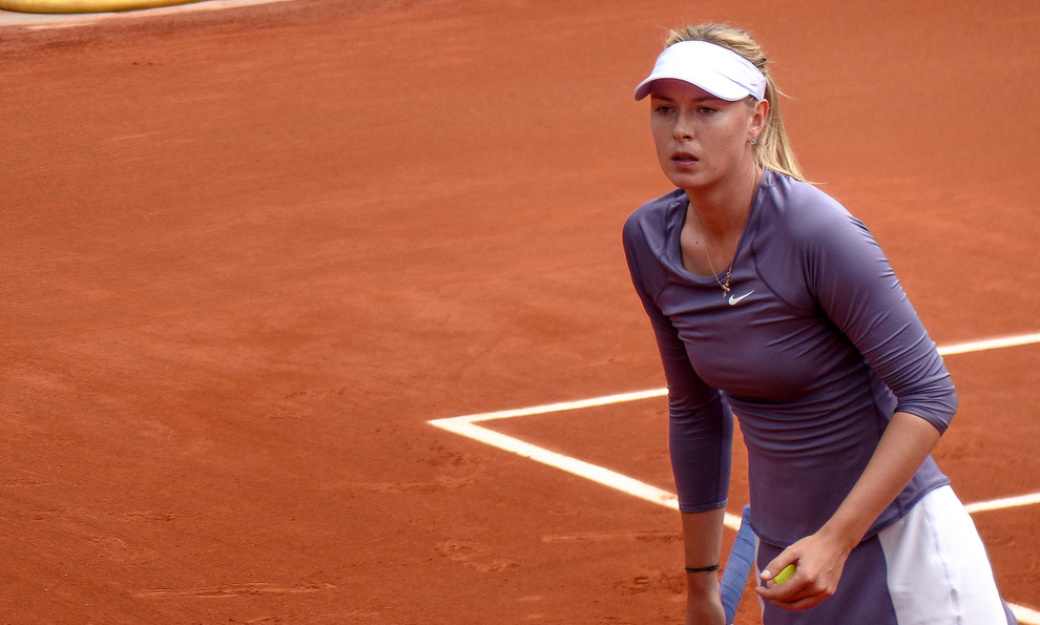Will Sharapova Change Tennis's Doping Problem?

Here’s what’s supposed to happen: if a tennis player fails a drug test, he or she is expected to announce a mysterious injury, and then stay out of competition until a secret trial delivers a verdict. If found guilty, the suspension is only revealed months later.
But on Monday, Maria Sharapova, the highest-paid female athlete in the world, held a press conference and read a confession from a single sheet of paper. The 28-year-old said she had made a huge mistake: she tested positive for the newly-banned drug meldonium, also known as mildronate, which she said she had been taking for ten years.
This candid moment was actually a calculated move from the five-time Grand Slam champion, a tall blonde known for her warrior-like shrieks on court and her many fashion endorsements off it. On this day, the podium served as center court in what is to be Sharapova’s marathon match against the sport’s governing body, the International Tennis Federation.
The ITF is a sprawling bureaucracy that governs more than 200 national tennis organizations. The New York Times reported that it is the “weakest ingredient in the alphabet soup that is tennis governance.” Unlike football’s FIFA, tennis’s governing body isn’t synonymous with corruption, though it was bruised by a match-fixing scandal earlier this year. But betting on low-ranking players isn’t as sexy as doping, so the average fan knows little about what the ITF actually does.
By striking first, Sharapova is aiming to control the narrative, which goes something like this: She is not a cheater; instead, she—and her monster team of doctors and coaches and handlers—made an honest mistake and didn’t know the drug had been banned. Sure, she ingested the drugs, but it wasn’t to enhance her performance.
Sharapova said a family doctor prescribed meldonium in 2006 because she was “getting sick very often,” and had a magnesium deficiency, irregular EKG results, and signs of diabetes. The Latvian manufacturer of the drug, however, says that meldonium is typically prescribed for use for only four to six weeks. ESPN reports that it was “regularly given to Soviet troops in the 1980s to boost their stamina while fighting in Afghanistan.”
The drug was moved to the World Anti-Doping Agency’s banned list on January 1, 2016, because of “evidence of its use by athletes with the intention of enhancing performance.” Sharapova claims that she and her team simply failed to click the link to the banned list when they received it in an email. Russia reportedly warned athletes months ago about meldonium. More than 60 athletes have tested positive for the drug since it was banned.
For years, there has been a serious lack of transparency in tennis’s anti-doping protocol. This has fueled conspiracy theories of backroom deals and silent bans for stars who disappear for months with “injuries.” (Just ask Rafael Nadal, who hasn’t failed a drug test but constantly faces allegations.)
But isn’t tennis the gentleman’s game, not a doping sport? It’s easy to spot the benefit of performance-enhancing drugs in other sports: Huge muscles help smack home runs in baseball and superhuman endurance gives cyclists an edge. There’s a temptation to dismiss doping in tennis because of the apparent finesse and subtlety the sport demands—matches are decided by a delicate backhand slice or the flick of a wrist on a forehand winner. This is not entirely true. The game has evolved to be defined by huge serves, booming groundstrokes and, particularly in the men’s game, grueling five-set, five-hour matches in the heat, and often on little rest.
In the face of a changing sport, ITF’s anti-doping agency’s record hasn’t been spotless. In 2011, Serena Williams locked herself in a panic room in fear of a tester she thought was a home intruder. Marin Cilic, who won the U.S. Open in 2014, had a suspension cut short in 2013 after he blamed his mother for buying the wrong glucose supplements. But when doping tests are administered, they seem to work. Players face urine tests (to detect steroids) and blood tests (to detect more sophisticated EPO doping, which boosts the amount of red blood cells; and human growth hormone) in two ways: any time during a competition, usually after a player is knocked out of or wins a Grand Slam tournament, and random out-of-competition (OC) tests.
In 2013, when I last spoke to Stuart Miller, who runs the ITF’s anti-doping program, he told me that “it would be naïve to think that we detect every instance of doping in tennis.” Since then, the sport has introduced biological passports, a digital record of a player’s blood profile, to spot changes over time. Meanwhile, the number of blood tests has increased, and OC tests have skyrocketed. In 2012 there were only 63 OC tests; in 2014 it jumped to 1,139.
Despite the increased efforts, the problem is that tennis’s anti-doping watchdog is run by the ITF. What’s the incentive for tennis to punish its megastars? “I’m always surprised,” said 17-time Grand Slam champion Roger Federer. “I win a tournament. I walk off the court, and it’s like, ‘Where’s the doping guy?’”
Ten years ago, when Miller streamlined drug testing through the ITF instead of through player organizations (the ATP for men and the WTA for women), he said it would eliminate an inherent conflict of interest. Players wouldn’t be policing themselves.
But to say that the ITF has no conflict of interest is delusional. According to a report on the ITF’s finances for 2014, the Davis Cup, tennis’s World Cup and the governing body’s premier moneymaker, takes in $25 million a year from TV, licensing, and sponsorship deals. The 2012 London Olympics brought in an additional $23.6 million in income. The money that funds the ITF absolutely depends on the players.
Miller told me in 2013 that the ITF’s silence about a player’s provisional suspension before a tribunal is exactly what it looks like: to protect the players.
“There is an option to disclose those names earlier,” he said. “But that’s at a stage in the process where there are many reasons why athletes can provide evidence to show that they haven’t committed a violation. And the logic of releasing names, when there is a risk that public perception will label an athlete who is innocent as being a doper, doesn’t particularly sit well with this idea of innocent until proven guilty.”
The New York Times reported that this year the ITF will do 75 percent of drug testing itself (the remaining 25 percent will be administered by independent anti-doping organizations) and the current budget for the program is believed to be only $4 million. The new president of the ITF, David Haggerty, is a former tennis industry executive keen to boost revenue (the ITF reported an operating surplus of only $2.1 million for 2014), and told the Times he plans to increase the budget and outsource more testing in 2017.
Porsche, TAG Heuer, and Nike have suspended Sharapova’s endorsement campaigns. She announced an arm injury after her doping charge and is currently serving a provisional suspension. Meanwhile, there are murmurs that meldonium use was rampant in tennis.
If it’s proven that Sharapova used meldonium as a performance enhancer, she faces a four-year ban. Unwittingly thrust into the spotlight, the ITF, for years considered a punchline that rarely punishes the stars of tennis, may have no choice but to hit back.
Sujay Kumar is an editor at Fusion.

